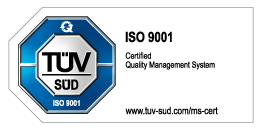Electric Express Powered Rail Car.
Prototype: Swiss Federal Railways (SBB/CFF/FFS) class RBe 2/4, "Roter Pfeil" / "Red Arrow" in basic red paint scheme. The unit looks as it did from the middle to the end of the Fifties.
Most Important Facts
| Article No. | 22865 |
|---|---|
| Gauge / Design type | Trix H0 / |
| Era | III |
| Kind | Powered Rail Cars |
Check with your local dealer Find Dealer
Highlights
- Reworked drive mechanism.
- DCC-/Sx decoder with a locomotive whistle sound.
- Headlights and interior lights are warm white LEDs.
-
Product description
Model: The powered rail car has a DCC decoder, controlled high-efficiency propulsion, and a sound effects generator. It also has a special can motor with a flywheel and a cardan shaft to the power truck. 2 axles powered. Traction tires. The headlights have the Swiss headlight changeover, will work in conventional operation, and can be controlled digitally. The headlights and interior lights are warm white LEDs. The powered rail car has double arm pantographs with a narrow wiper. Total length over the buffers 25,7 cm/ 10-1/8".
Spare parts for our articles can be found here in our spare parts search.
-
Publications
- New Items 2010 - Main Catalog 2010/2011 - Main Catalog 2011/2012
-
Prototype information
Red Arrows in the Network of the Swiss Cross. The Swiss Federal Railways placed the famous class CLe 2/4 Red Arrows into service at the end of the Thirties. The range of services required of these lightweight powered rail cars extended from express service to regional use right on up to prestigious excursion runs across the Gotthard route. The 7 Red Arrows were all a credit to their name, but with their maximum speed of 125 km/h / 78 mph they were head and shoulders above the rest of the rail services in Switzerland, which had to make do with 100 km/h / 63 mph. The lightweight construction was also trailblazing as was the compressed air mechanism for opening and closing the telescoping sliding doors. The widely spaced trucks and the low-mounted body was designed to guarantee quiet running for these units with their weight of only 33 metric tons. Both streamlined hoods concealed the oil-cooled transformer and the two traction motors wired in series. There were two engineer's cabs in the passenger area, in which the engineer could do his job sitting; the bench next to him provided seating for 2 more passengers, who enjoyed a perfect view down the track. These powered rail cars were initially designed to run alone and therefore did not have the usual coupler and buffer equipment - this equipment was not installed until after World War II so that a lightweight freight car, for example, could go along. Despite expectations that were not completely fulfilled, the Red Arrows quickly became popular with railroad passengers and in some cases, or so it has been told, they were downright stormed. Up to 200 passengers would crowd into these cars, which were authorized for 100 passengers (70 seats and 30 spaces for standees). Mostly due to the excursion runs, they could be seen in almost every corner of the Swiss Confederation and reached a high level of recognition among the public similar to that of the Crocodiles. The Red Arrows underwent several rebuilds during their active service life, new technical features were installed, and they were given new class designations several times; the first unit was retired and scrapped in 1966 as the class RBe 2/4. By 1974 there were 2 units left on the SBB's roster, of which one was sold to the OeBB and was run for several more years in an unusual blue paint scheme. One powered rail car still exists today as an historic unit and harkens back to the time of the Red Arrows in the service of the Swiss Cross.
-
Digital Functions
DCC SX2 SX MFX Headlight(s) Interior lights Light Function1 Locomotive whistle Direct control




